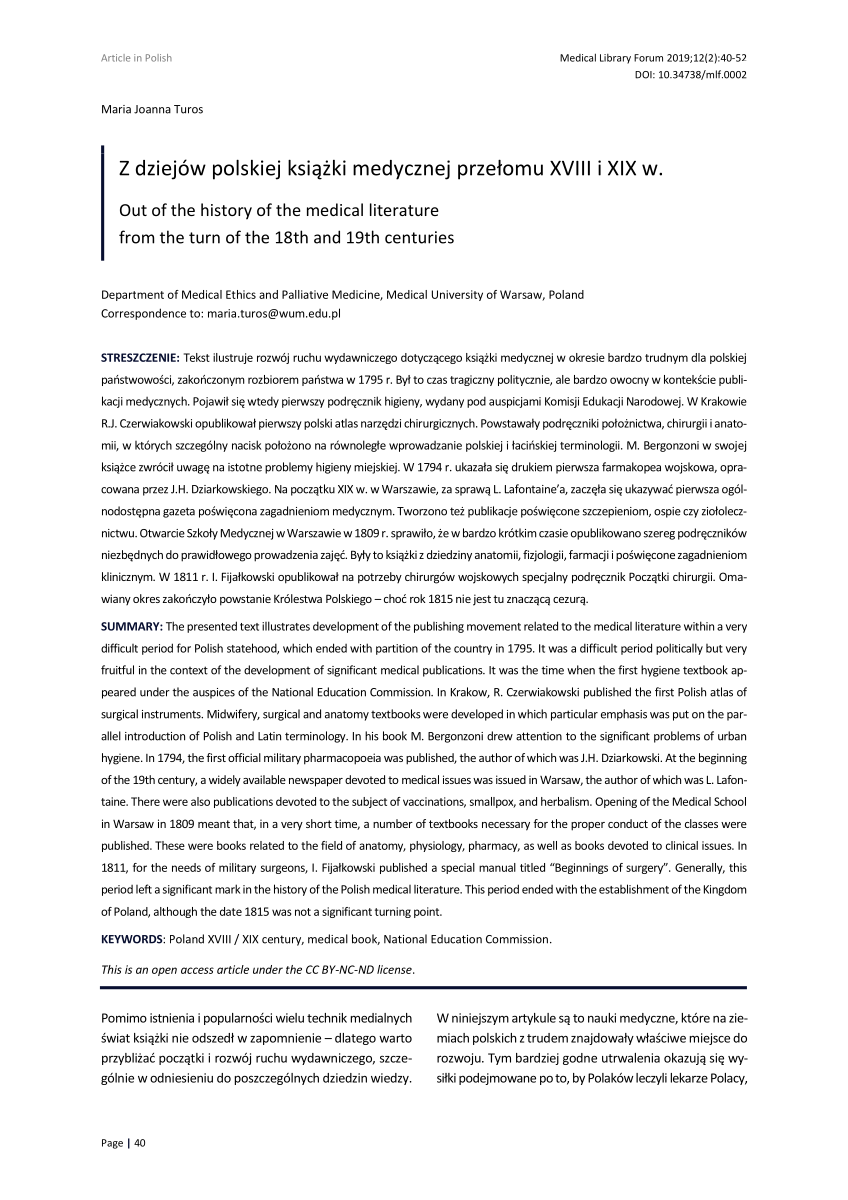Out of the history of the medical literature from the turn of the 18th and 19th centuries
Abstract
The presented text illustrates development of the publishing movement related to the medical literature within a very difficult period for Polish statehood, which ended with partition of the country in 1795. It was a difficult period politically but very fruitful in the context of the development of significant medical publications. It was the time when the first hygiene textbook appeared under the auspices of the National Education Commission. In Krakow, R. Czerwiakowski published the first Polish atlas of surgical instruments. Midwifery, surgical and anatomy textbooks were developed in which particular emphasis was put on the parallel introduction of Polish and Latin terminology. In his book M. Bergonzoni drew attention to the significant problems of urban hygiene. In 1794, the first official military pharmacopoeia was published, the author of which was J.H. Dziarkowski. At the beginning of the 19th century, a widely available newspaper devoted to medical issues was issued in Warsaw, the author of which was L. Lafontaine. There were also publications devoted to the subject of vaccinations, smallpox, and herbalism. Opening of the Medical School in Warsaw in 1809 meant that, in a very short time, a number of textbooks necessary for the proper conduct of the classes were published. These were books related to the field of anatomy, physiology, pharmacy, as well as books devoted to clinical issues. In 1811, for the needs of military surgeons, I. Fijałkowski published a special manual titled “Beginnings of surgery”. Generally, this period left a significant mark in the history of the Polish medical literature. This period ended with the establishment of the Kingdom of Poland, although the date 1815 was not a significant turning point.
Keywords
Poland XVIII / XIX century, medical book, National Education Commission
DOI:
https://doi.org/10.34738/mlf.0002Downloads

How to Cite
License
Copyright (c) 2020 Maria Joanna Turos

This work is licensed under a Creative Commons Attribution-NonCommercial-NoDerivatives 3.0 Unported License.



